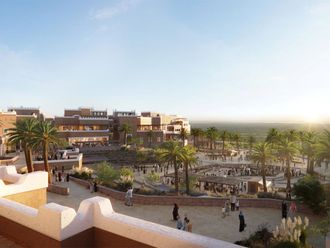The discovery of a new surf spot allows a lucky board rider to commune with nature unfettered. Yet the inevitable influx of surfing hordes can also spur a burst of economic growth, according to new research.
A survey of more than 5,000 breaks in 146 countries suggests the discovery of high-quality surf can drive up economic growth by 2.2 percentage points a year in the surrounding area, according to a study co-authored by Sam Wills, an economist and lecturer at the University of Sydney. He says policymakers could use surf breaks as a way to create jobs and reduce poverty, especially in developing countries.
“We conducted four sets of experiments, and they all confirm that good waves significantly increase growth, particularly after recent discoveries and during El Nio years,” said Wills. With more than 35 million surfers estimated worldwide, new spots will “continue to be discovered and built; and will continue to grow in popularity as populous, wave-rich economies like Brazil and Indonesia consume more leisure,” he said.
The research was inspired by a trip to Taghazout in Morocco as Wills sought a surfing holiday somewhere warm and quiet. As he flew in over the desert at sunset all was dark — except for one spot that blazed like central Sydney. On arrival, he discovered that the previously sleepy little fishing village had been overrun by surfers, and later decided to research similar global trends.
His work used satellite images of night-time light emissions from areas near surf breaks as a proxy for economic growth, while also analysing subsequent population gains, and tapped data from 1992 to 2013. In the paper, Wills cited Tarik Senhaji, director-general of the Moroccan Sovereign Wealth Fund, who last year declared: “Surfers are the trendsetters, then the other tourists follow.”
A high-quality surf break, patronised by intrepid surfers, provides a focus for investment and can then grow to support a broader tourism industry. Wills cites Taghazout, Byron Bay in Australia, Jeffreys Bay in South Africa and Arugam Bay in Sri Lanka that all started out as small surfing towns.
While it’s well understood that natural phenomenon like rivers and fertile soil have always mattered for economic growth, the study “provides some of the first evidence that natural amenities are also important,” says Wills. Such amenities boost productivity by growing recreational industries and tourism, he said, while attracting workers willing to earn lower wages and entrepreneurs happy to accept lower profits because of the proximity to good waves.
The research showed the five fastest-growing surf breaks internationally from 1992 to 2013 were in Costa Rica, Peru, Malaysia, Vietnam and New Zealand; Costa Rica held three of the top 10 rankings. There’s also good news for mineral-rich Western Australia, whose mining investment boom has turned to bust, with the state accounting for nine of the 10 fastest growing surf break regions Down Under.
Conversely, data from two locations where surf breaks disappeared — at Jardim do Mar in Portugal and Mundaka in Spain — the nearby economies contracted in response. The impact of new breaks in emerging countries is also more powerful than in developed ones, such as in Skeleton Bay, a 1.5 kilometre (1-mile) point break off the coast of the Namibian Desert discovered in 2008.
“Since the break was found the surfing world — amateur and professional alike — has descended into the desert to ride the relentlessly grinding waves,” said Wills.
It’s not just sun-soaked regions enjoying the spoils. Breakthroughs like battery-heated wet suits that made cold-water breaks more accessible has had a similar effect in countries with harsher climates. Surf’s up, Norway.
— Washington Post












